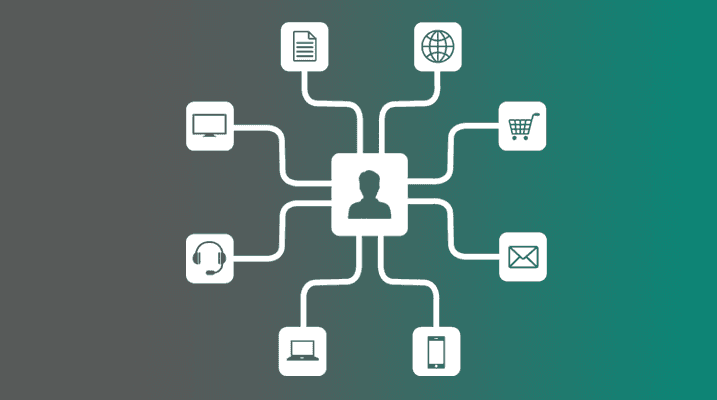E-commerce Trends + Facts 2018

2017 – A Banner Year for E-Commerce
2017 was a banner year for E-commerce in US and globally. In the US alone, over 54M shopped online and over 64M shopped online and in stores. There were 58 days where online sales exceeded 1 Billion dollars. US Online Sales topped $459B which represents approximately 13% of Total US Retail, (up by 2 to 3% higher than from the past 2 to 5 years). And was up by 14% from 2016. We had a record setting holiday shopping spree keeping up with the consistent increase in sales year after year. Online Sales are dramatically ousting the retail Commerce, growing at 5 times faster than retail Commerce and expected to grow up to 17% in the coming 5 years.

Rising Global Online Sales
More Exciting is the rising effect of the Global Online Sales. In 2017, E-commerce Online Sales reached $2.29T, growing up to 23.2% y/y and representing about 10% of the Retail sales.
Rise of the Mobile
Mobile Influence over retail sales has never been greater and ought to be priority if it has not been till now. SmartPhones and Tablets generated 60% of the Holiday traffic, and mobile now accounts for much more traffic than desktops and laptops. Mobile accounts for 40% Sales, which is up from the ‘teens’ 2 to 3 years ago, and Mobile sales accounts for 36B in US. a few years ago.
This does not even account for the Mobile Research and Product discovery from mobile devices leading to sales. Cyber Monday witnessing a 22% increase in traffic and generating $2Billion in sales. With more and more customers coming to your sites from Mobile devices, it is just essential to have a Mobile-first strategy and no sub-par experiences.

The Amazon Effect
Amazon, the indisputable king of ecommerce delivery, is fast becoming the number one product search engine, ahead of Google. It is changing how people view Amazon in the marketing mix. If you observe the list of the top 50 retailers ranked by e-commerce sales in 2017, the total Online sales of Amazon outweigh the 40 other retailers combines ($88.3 billion to Amazon’s $94.7 billion). Amazon has been called ‘one of the clear winners over the holiday season’ with 28% sales growth even without taking Whole Foods into account. (The sales growth was 38% when Whole Foods is added in.).
Omni-Channel picks up steam
It is expected that by 2019, 50% of retailers would have adopted a retail, omni-channel commerce platform. This will enable them to coordinate traditional channels and helps them create that seamless customer experiences. It helps the unify inventory in all channels by offering options like “Buy Online/ Ship to Store” or “Buy Online & Pick up in Store” giving customer choice priority.
Amazon, Target and other giants are driving Customer Experience to where customers don’t want to wait for 4 to 5 days, but get their products in 2 days or the next day. Other retail merchants have to compete with these giants on what they are doing. Today, 89% use one digital channel to purchase goods and services, yet only 13% find these digital and physical channels well aligned. There are a plethora of opportunities for merchants to improve this.

B2B E-commerce
The same revolution that has changed retail in the B2C industry is changing the B2B industry. With more B2B merchants moving online, the B2B E-commerce is expected to grow $1.18 Trillion by 2021. Merchants who have been digital leaders, need to make sure their wholesale business experiences is equally innovative and effective.
Intelligent Customer Journeys
As data gets more integrated and there are more Artificial Intelligence tools available, merchants will improve their customer profiling and customers will benefit by having better, uniquely tailored customer experiences. Currently this is not yet the trend; almost 70% of the companies today do not use this data.
Today we have ‘cross-sells’ and ‘up-sells’. But this is based on past site visits; going forward it will need to take into account everything we need to know about the user. From chat boxes to voice enabled devices, as larger retailers take risks and achieve more success, other merchants will follow suit. Predictive Analytics will become the norm; ‘Here’s what you should/ Here’s what you could’ instead of ‘Here’s what happened.’

Augmented Reality
The lack of interactivity when shopping online, where customers cannot touch, feel, or try a product, not to mention how it will fit in their house, affects the decision-making process results in a larger number of empty carts. Augmented Reality (AR) presents an effective solution of implementing a touch-and-feel element to e-shopping.With AR technology, customers can use real-life spaces and even their bodies and faces to check out if such things as furniture, clothing, etc. suit them. Thus, the major benefit of AR is that it merges two worlds, the digital and the real ones. Interesting mentions would be Place app launched by Ikea late last year, Amazon’s AR View app , Measured by Lowe’s, a virtual tape measure , Bic’s Drawbook app for kids
Voice Searches
In 2018, voice will be one of the leading drivers of innovation in the ecommerce space – and not just on mobile, as voice assistants such as Google Assistant and Alexa become common place. Walmart and Google recently announced a partnership to allow shopping through Google’s voice assistant, Google Assistant. This will mainly be used for reorders. Adoption of smart home appliances such as Amazon’s Echo and Google’s Home units has been a major driver of voice search, particularly in the ecommerce space.

